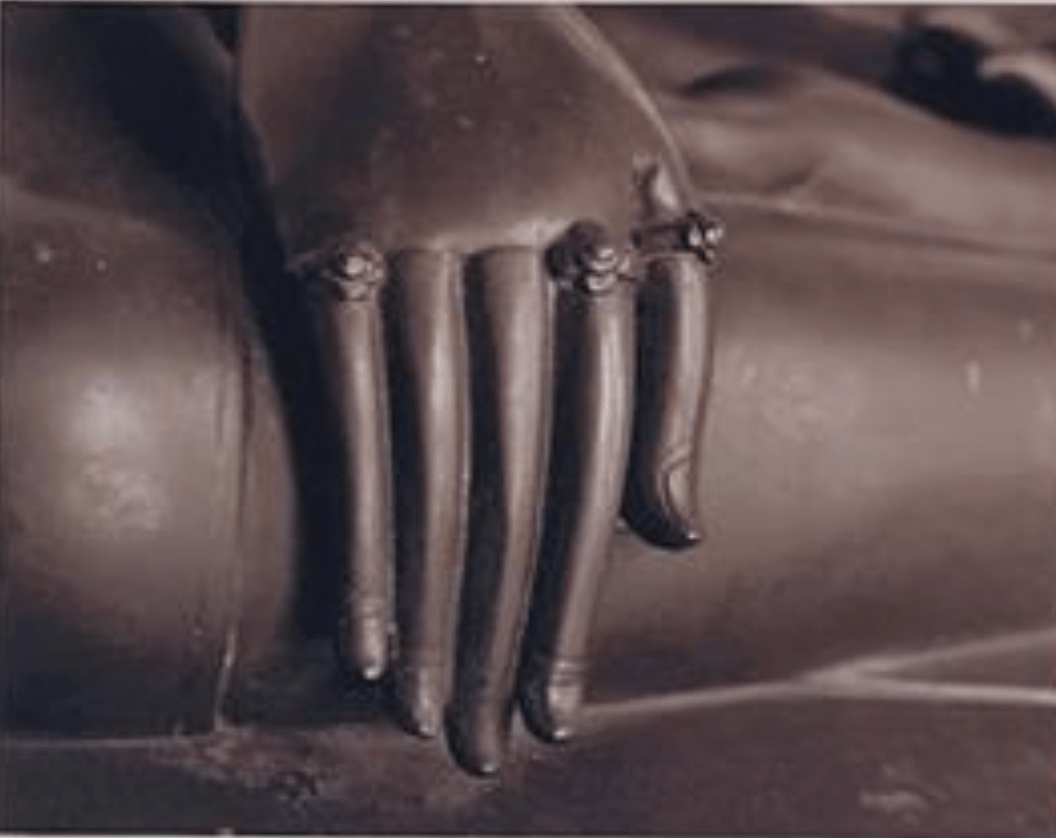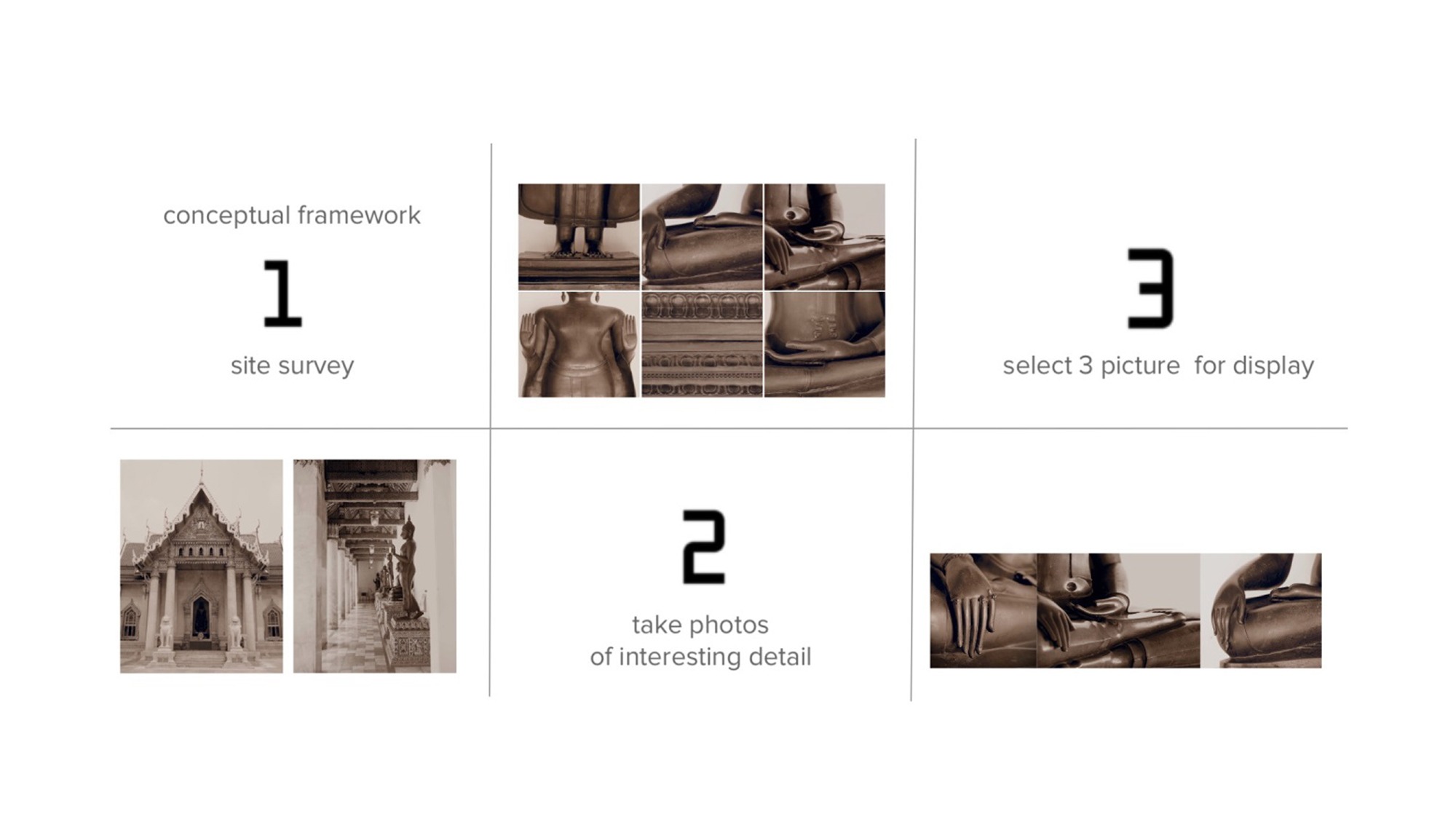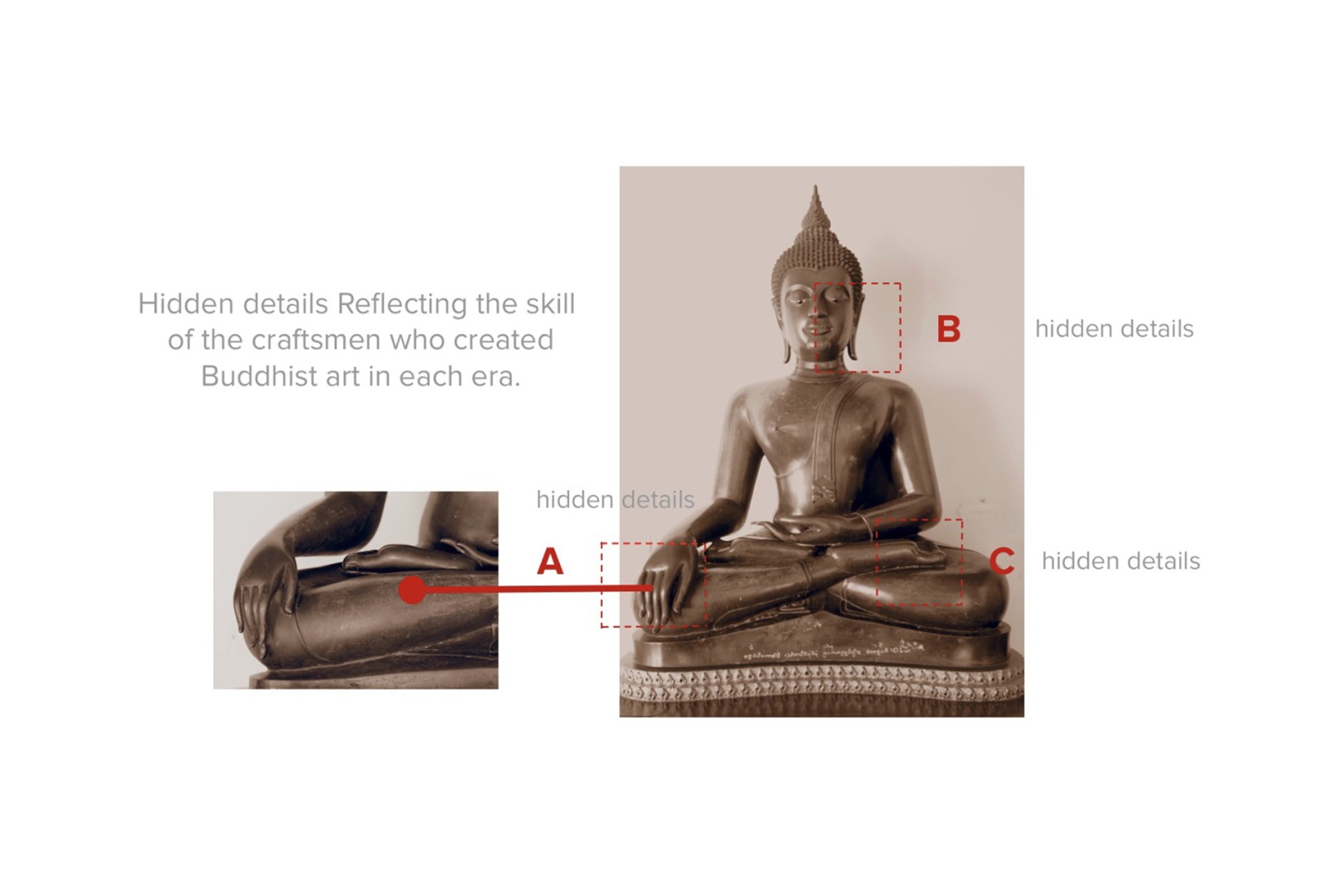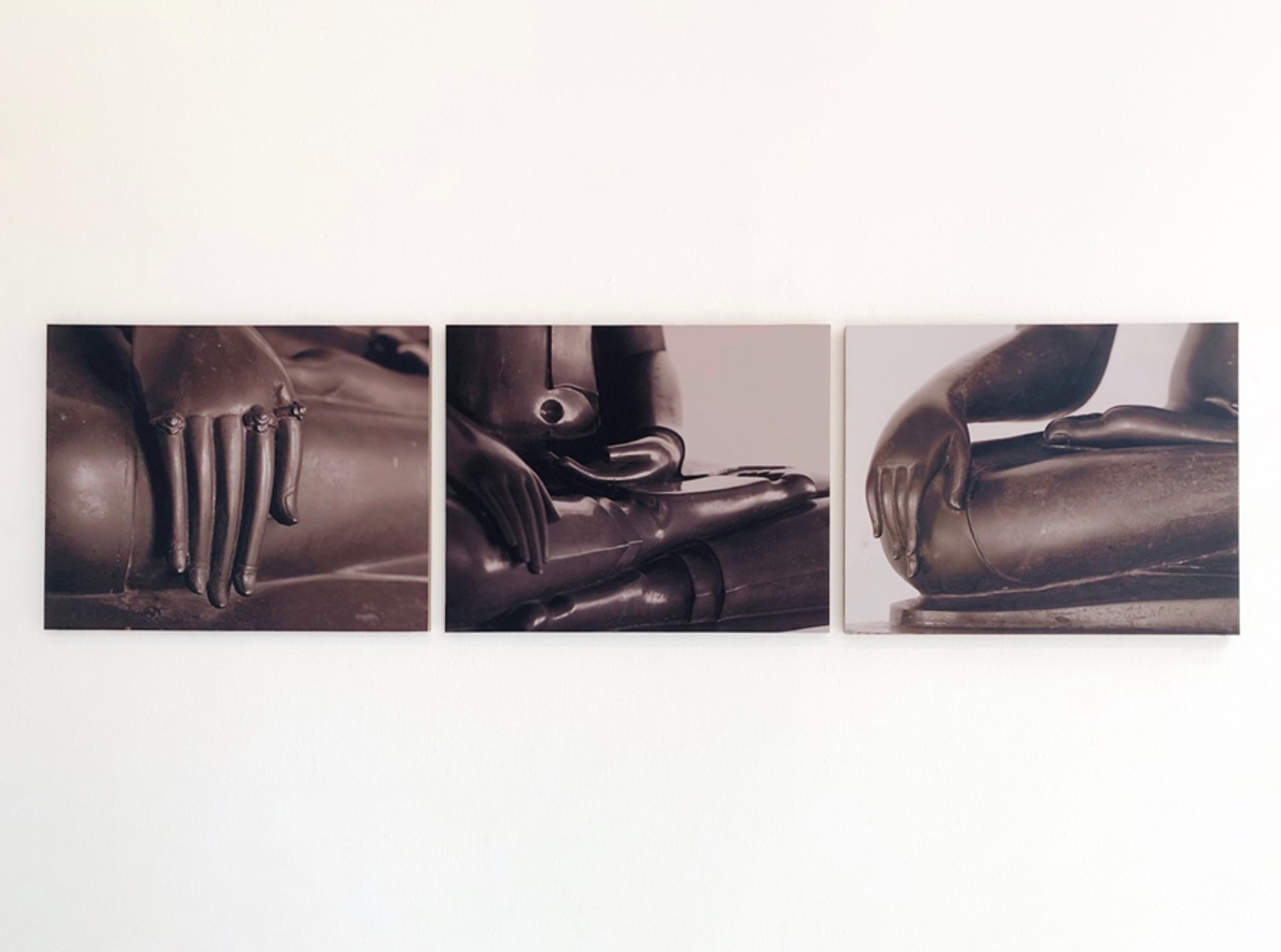
Mr. Bundit Niamsup



Abstract :
Buddha sculptures are common among countries and cultures that embrace Buddhism.
which originates from India When Buddhism spread to various regions throughout Asia, the creation of Buddha images from various materials was an important evidence that emphasized the creation of images to represent the Lord Buddha as if he were still alive in the present.
The posture of the Buddha image besides showing the history of Buddha in various episodes. The placement of hands, sitting, standing, wearing different types of robes all convey different meanings. And in the art forms of the cultures of different countries, they show different unique skills. For example, the seated Buddha image in Burmese art is different from the seated Buddha image in Lanka art. Or is it different from the sitting Buddha in Thai art .
This photographic work has the title “Hidden details in the Buddha statue” using sepia tone photography techniques. By focusing on the details of the lower part of the three alloy seated Buddha sculptures, the Buddha statues are placed inside the cloister of Wat Benchamabophit Dusitwanaram Bangkok. This time, we focused on taking photos specific to the hand area. Distal portion of the arm and knee area To reflect the sharp skill and ingenuity of past sculptors who have hidden their craftsmanship through these beautiful flowing lines of the Buddha’s body. Weak curvature of the arms Fingertips that twitch The edges of the robe are convex and curved to fit the legs. Gives a feeling of delicacy and simplicity hidden in peace. The gentle curves of these lines of the Buddha’s body invite us to imagine the image of soft clouds floating slowly above the sky.
Therefore, I hypothesize that Details of the lines And the mass and dimensions of the Buddha sculptures presented in these 3 images are probably the determination of the sculptors in the past who wanted to create Buddhist art that looked light and floating, like the state in which the Lord Buddha was freed from the cycle of rebirth. Above the conditions of birth, old age, sickness, death, or the state of ” Nirvana ” itself.
Objectives :
Therefore, I hypothesize that Details of the lines And the mass and dimensions of the Buddha sculptures presented in these 3 images are probably the determination of the sculptors in the past who wanted to create Buddhist art that looked light and floating, like the state in which the Lord Buddha was freed from the cycle of rebirth. Above the conditions of birth, old age, sickness, death, or the state of ” Nirvana ” itself.
Conceptual Framework :
Inserted in the Abstract
Process / Methodology :
Inserted in the Abstract
Techniques and Materials :
captured with an Olympus camera using sepia color mode. and print on photographic paper Then seal the picture onto 3 rectangular wooden frames size 64 x 50 centimeters.
Result / Conclusion :
Inserted in the Abstract
References :
Inserted in the Abstract